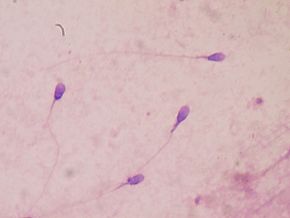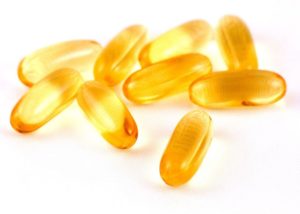 For years there has been a debate about whether adding fluoride to drinking water was a plus (less tooth decay) versus those who felt there were possible health problems from the fluoride. Now the results of a Canadian study is raising serious concerns. The researchers followed 601 pregnant women from 6 cities in Canada, and found that pregnant women with higher levels of fluoride in their urine tended to have children with lower average IQs (which was measured at 3 or 4 years of age). As in the USA, some communities added fluoride to municipal drinking water, while others didn't.
For years there has been a debate about whether adding fluoride to drinking water was a plus (less tooth decay) versus those who felt there were possible health problems from the fluoride. Now the results of a Canadian study is raising serious concerns. The researchers followed 601 pregnant women from 6 cities in Canada, and found that pregnant women with higher levels of fluoride in their urine tended to have children with lower average IQs (which was measured at 3 or 4 years of age). As in the USA, some communities added fluoride to municipal drinking water, while others didn't.
The problem is that: "Fluoride crosses the placenta, and laboratory studies show that it accumulates in brain regions involved in learning and memory, and alters proteins and neurotransmitters in the central nervous system." Not good. This is why studies are being done.
The researchers concluded the study with these words: "In this prospective birth cohort study from 6 cities in Canada, higher levels of fluoride exposure during pregnancy were associated with lower IQ scores in children measured at age 3 to 4 years. These findings were observed at fluoride levels typically found in white North American women. This indicates the possible need to reduce fluoride intake during pregnancy." [Note: in this study, the effect appeared to be stronger in boys than girls.]
Just note that this was an observational study (found an association, not a definite cause), but other studies also find such an association. (One study conducted in Mexico found that higher prenatal fluoride exposure was linked to lower IQs in 4 to 6 year old children.) Of course more studies are needed.
But in the meantime, one can try to lower fluoride exposure (in water) during pregnancy. One way is to drink less black tea (has high levels of fluoride) and green tea (varying levels of fluoride). Also, if fluoride is added to tap water, to try to drink less of that and perhaps more unfluoridated bottled water that is in glass bottles (because plastic leaches, and has more microplastics in it).
From The Scientist: Fluoride Exposure During Pregnancy Linked to Lower IQ In Sons ...continue reading "Fluoridated Drinking Water and Pregnancy"

 Good news for those wondering if home births are as safe as hospital births. An international study says the answer is YES, for
Good news for those wondering if home births are as safe as hospital births. An international study says the answer is YES, for  Two years ago
Two years ago  For a few years I've been noticing that studies of vitamin D have had mixed results for a number of medical conditions. A number of times
For a few years I've been noticing that studies of vitamin D have had mixed results for a number of medical conditions. A number of times  Many of us have concerns over the fact that people are constantly exposed to endocrine disruptors (chemicals that disrupt hormonal systems) in many common household and personal products. Even the vinyl flooring found in many homes contains phthalates, which are endocrine disrupting chemicals.
Many of us have concerns over the fact that people are constantly exposed to endocrine disruptors (chemicals that disrupt hormonal systems) in many common household and personal products. Even the vinyl flooring found in many homes contains phthalates, which are endocrine disrupting chemicals. Researchers have known for a while that human breast milk contains hundreds of
Researchers have known for a while that human breast milk contains hundreds of  Today's topic: BIRTH. Two recent studies have results that question some current medical practices, which are when to cut the umbilical cord, and hospital vs home birth differences in the baby's gut microbes.
Today's topic: BIRTH. Two recent studies have results that question some current medical practices, which are when to cut the umbilical cord, and hospital vs home birth differences in the baby's gut microbes. The following is a really nice article about endocrine disruptors (chemicals that can interfere with the body's hormonal system). Journalist Hillary Brueck writes about where they are found (all around us!), some of the many negative health effects, and about NYU physician and researcher
The following is a really nice article about endocrine disruptors (chemicals that can interfere with the body's hormonal system). Journalist Hillary Brueck writes about where they are found (all around us!), some of the many negative health effects, and about NYU physician and researcher